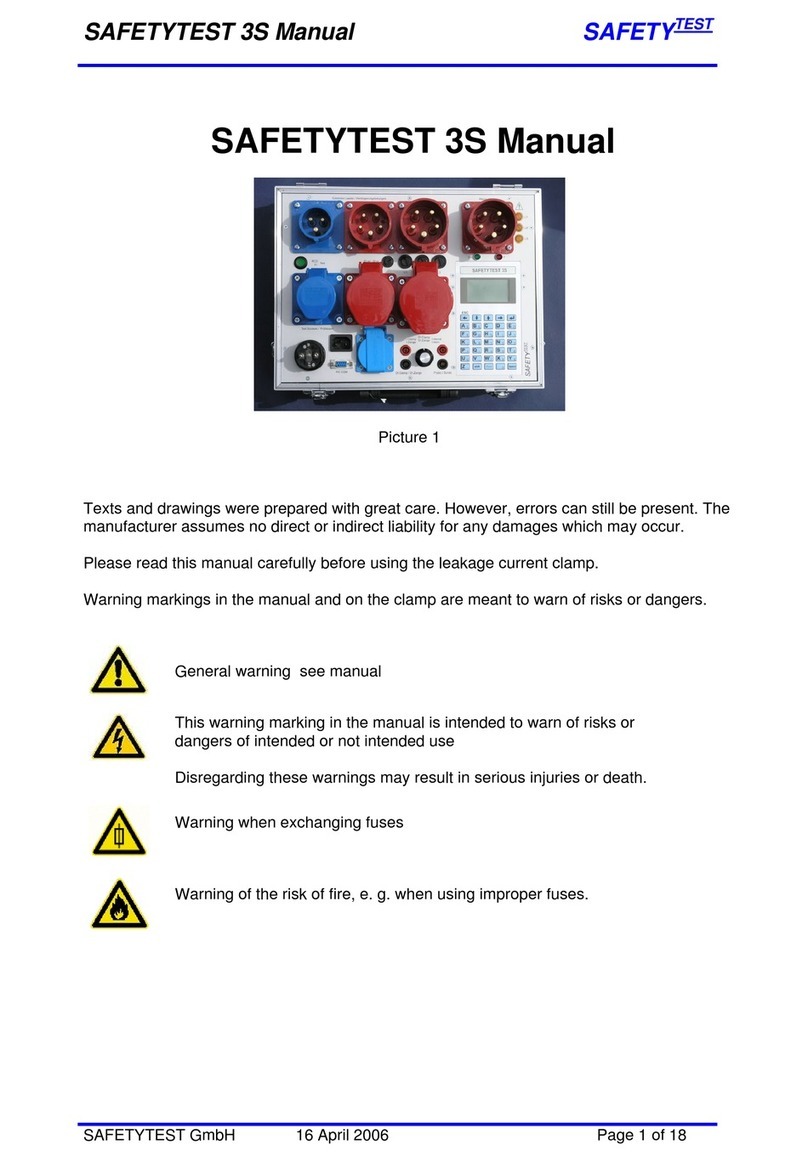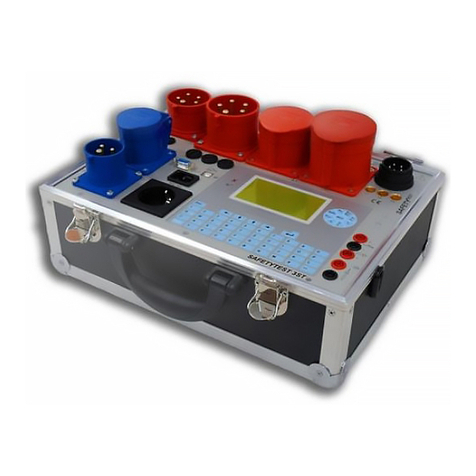1General Safety and Warning Notes ........................................................... 5
2Application................................................................................................... 7
3Scope of Delivery and Accessories........................................................... 7
3.1 Scope of Delivery (Standard):.....................................................................................7
3.2 Accessories (optional):................................................................................................7
4Connections, Display and Keyboard......................................................... 8
4.1 Connection (Figure 2).................................................................................................9
4.2 Mains connection, Type Schuko –IEC (Figure/1) .......................................................9
4.3 Measuring terminal black „GND“ (Figure 2/2)..............................................................9
4.4 Measuring terminal red „Probe“ (Figure 2/2) ...............................................................9
4.5 Interface USB B (Figure 2/12).....................................................................................9
4.6 Test socket (Figure 2/11)............................................................................................9
4.7 Keyboard and Display (Figure 2/6, 7)........................................................................10
4.8 Display (Figure 2/5)...................................................................................................10
5Functional Description ............................................................................. 10
5.1 Power Supply............................................................................................................10
5.2 Memory.....................................................................................................................10
5.3 Interface USB ...........................................................................................................10
5.4 Bluetooth Interface....................................................................................................10
6Testing the Mains Connection ................................................................. 11
7Connection Display................................................................................... 12
7.1 AC Connection..........................................................................................................12
8Display and Menu Structure..................................................................... 12
9Taking the Tester into Operation............................................................. 12
9.1 Visual check..............................................................................................................12
9.2 Connecting the tester to the mains system ...............................................................12
9.3 Starting the test.........................................................................................................12
10 Testing Electrical Appliances .................................................................. 13
10.1 Qualification..............................................................................................................13
10.2 Mains connection......................................................................................................13
10.3 Visual inspection.......................................................................................................14
10.4 Measurements..........................................................................................................14
10.5 Functional Test.........................................................................................................14
10.6 Checking the Markings .............................................................................................14
10.7 Documentation of the test.........................................................................................14
11 Connections, Pictures, Examples............................................................ 15
11.1 Earth bond test of AC appliances..............................................................................15
11.2 Earth bond test of permanently connected equipment ..............................................15
11.3 Earth bond test of three phase equipment using two test leads.................................15
11.4 Earth bond test of three phase equipment using the extension lead adapter.............16
11.5 Accessible conductive parts not connected to PE.....................................................16
11.6 Insulation Resistance LN-PE ....................................................................................17
11.7 Insulation resistance test LN-PE of three phase equipment using the extension lead
adapter.............................................................................................................................17
11.8 Earth leakage test of AC appliances with plug ..........................................................17
12 Error messages, Removing Faults .......................................................... 18
12.1 The display remains dark..........................................................................................18
12.2 Touch current display is 0,000 mA............................................................................18
12.3 Contact current measurement larger than 0,5 mA.....................................................18
12.4 Leakage current measurement shows “F“ as a result................................................18
12.5 Bluetooth-Communication.........................................................................................18






























